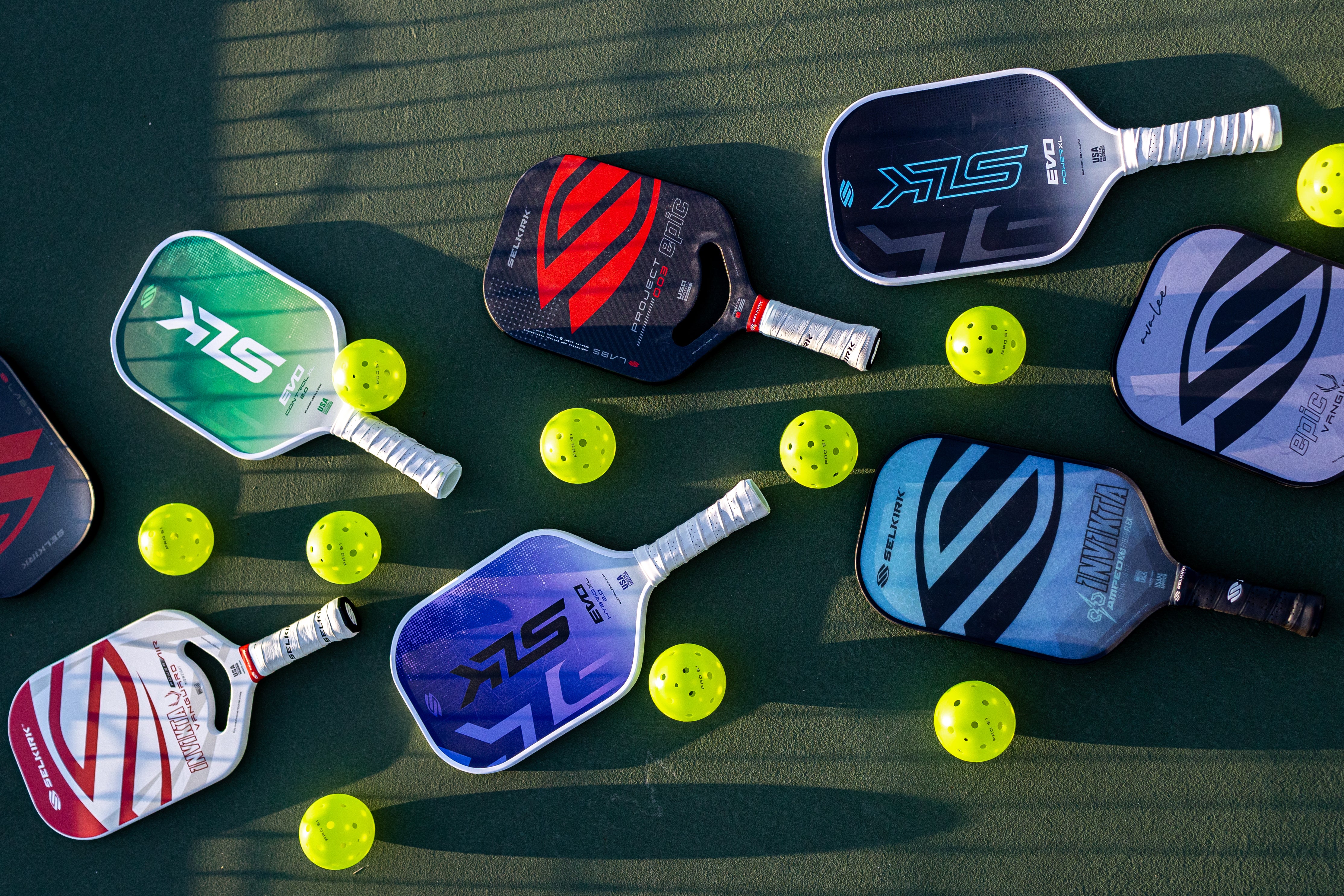
As with any sport, innovations in equipment can affect the way the game is played.
In pickleball, paddle companies are always searching for new ways to improve paddle performance. And one of the recent innovations actually comes in the way pickleball paddles are constructed.
There are two main methods of construction used today, the “sandwich method” and thermoforming, and there are benefits to each.
The “sandwich method”
Many traditional pickleball paddles are crafted using the sandwich method, in which the paddle is constructed much like a sandwich.
The core material — whether nomex, aluminum, polymer, or something else — acts as the meat of the sandwich. While the paddle faces act as the bread, encompassing both sides of the core.
Think about an empanada or an Uncrustable, where the edges are sealed to keep all the filling inside — this is the edge guard.
As there are many interchangeable parts, the sandwich method allows paddle manufacturers to have flexibility in determining which performance metrics they want out of a paddle.
They can mix and match different core and paddle face materials to garner different results. This method of construction is also known as “three-piece” paddle construction.
For example, if a manufacturer is hoping to create a control paddle with spin, they might consider a polymer core with a carbon fiber paddle face. A raw power paddle might feature a polymer core with a fiberglass paddle face.
Thermoformed pickleball paddles
Thermoformed pickleball paddles are those that are constructed using a combination of pressure and heat. The paddles are heat-molded and then injected with a foam core.
So, if you cut into a thermoformed pickleball paddle you wouldn’t see defined layers as you would in a sandwich method paddle. This method is also referred to as “one-piece” paddle construction.
Thermoformed paddles are becoming more popular because they offer exceptional power and feel. As most are made with advanced polymer materials, these paddles can offer improved strength and durability.
Paddle delamination
All pickleball paddles, no matter their construction, can become susceptible to a process called delamination. Delamination refers to a separation of layers within a pickleball paddle, which can significantly impact how a paddle plays.
When a paddle delaminates, it becomes illegal for competitive play. In sandwich method paddles, a delaminated paddle typically creates a dead spot on the paddle, which often makes it unusable.
When a thermoformed paddle delaminates, it becomes inconsistent but also more powerful. This is because the delamination causes a trampoline effect in the paddle in which one layer or material separates from another.
This separation can cause paddles to play more powerfully and unpredictably, which gives players an unfair advantage on the court.
Delamination is often a manufacturing issue, so it’s important to check your paddle manufacturer’s warranty before purchasing.







